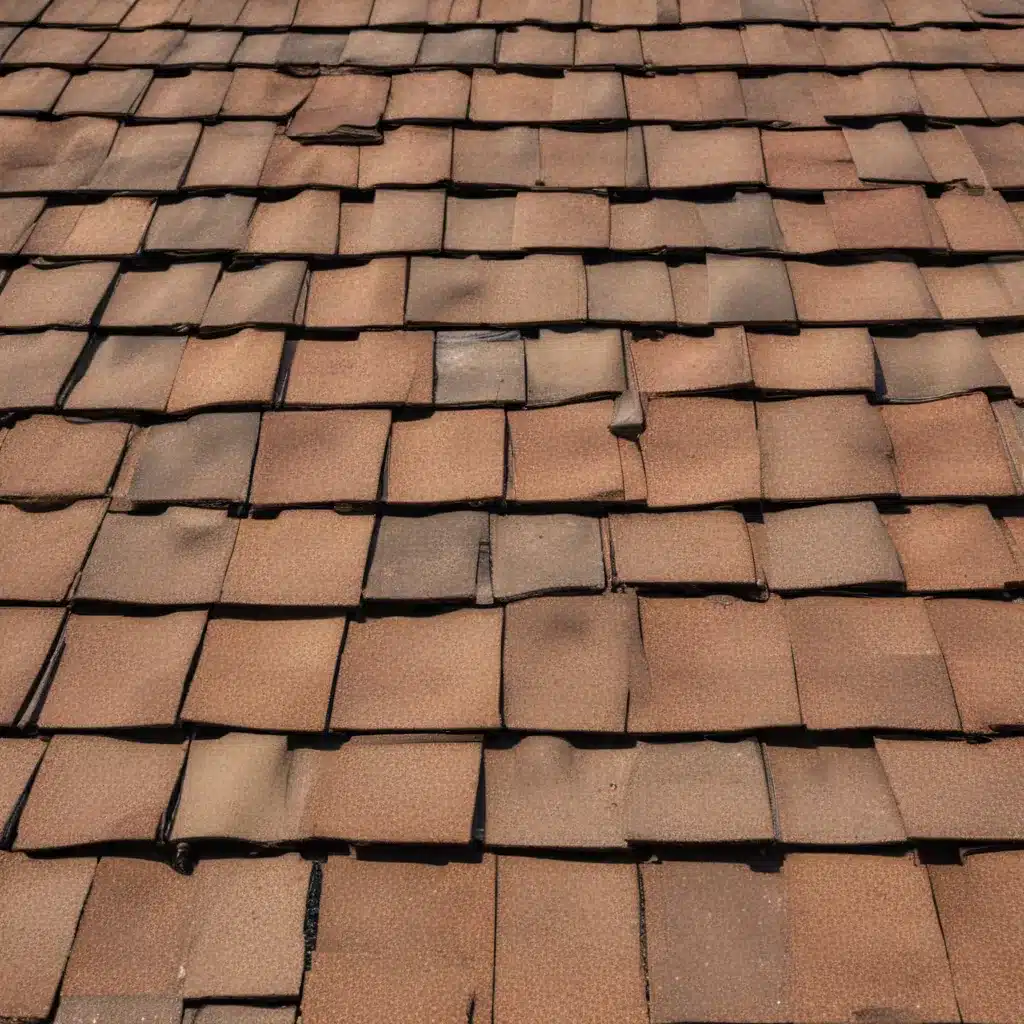
Maintaining Your Roof: A Proactive Approach
As a seasoned roofing professional, I understand the importance of keeping your home’s roof in top condition. Neglecting roof maintenance can lead to costly repairs, structural damage, and even safety hazards. In this comprehensive guide, we’ll explore practical DIY tips and expert insights to help you keep your roof in peak condition, ensuring your home remains protected from the elements year-round.
Identifying Common Roof Issues
The first step in effective roof maintenance is being able to identify potential problems. Some of the most common issues homeowners face include:
- Leaks: Look for signs of water stains, dampness, or mold growth in your attic, as these can indicate a leaky roof.
- Damaged Shingles: Inspect your roof for shingles that are cracked, curled, or missing.
- Flashing Problems: Check the areas around chimneys, vents, and skylights for any signs of damaged or detached flashing.
- Sagging Roof: Uneven or sagging areas on your roof may point to structural issues that require immediate attention.
By being proactive and regularly inspecting your roof, you can catch these problems early and address them before they escalate.
DIY Roof Repair Techniques
For homeowners who are handy and comfortable working on their roofs, there are several DIY repair techniques you can employ to address minor issues. However, it’s important to always prioritize safety and know when to call in a professional roofing contractor.
Repairing Roof Leaks
If you’ve identified a roof leak, start by locating the damaged area. Use a tarp or bucket to catch any water entering your home, and then temporarily seal the leak using roofing cement or a waterproof patch. This will provide a quick fix until you can address the underlying problem.
Replacing Damaged Shingles
To replace a damaged shingle, carefully remove the old one using a pry bar or hammer and chisel. Slide a new shingle into place, ensuring it aligns with the existing shingles. Secure the new shingle with roofing nails and apply a dab of roofing cement to seal the edges.
Fixing Flashing Issues
Flashing problems can be resolved by replacing or reattaching the flashing material. Gently remove the damaged flashing, clean the area, and install a new piece, making sure it overlaps the adjoining roofing material. Secure the flashing with roofing nails or screws.
Addressing Sagging Roofs
Sagging roofs often indicate structural issues that require professional assessment and repair. If you notice significant sagging or drooping in your roof, it’s best to contact a reputable roofing contractor to have the problem evaluated and addressed.
Choosing the Right Roofing Materials
When it comes to roof maintenance and repairs, the choice of roofing materials can have a significant impact on the longevity and performance of your roof. Some of the most popular roofing materials include:
| Material | Durability | Maintenance | Lifespan |
|---|---|---|---|
| Asphalt Shingles | Moderate | Low | 15-30 years |
| Metal Roofing | High | Low | 40-70 years |
| Tile Roofing | High | Moderate | 50-100 years |
| Slate Roofing | Exceptional | Moderate | 75-200 years |
Consider factors like your local climate, budget, and desired aesthetic when selecting the right roofing material for your home. Consulting with a professional roofing contractor can also help you make an informed decision.
Roof Maintenance Best Practices
Regularly maintaining your roof is the key to extending its lifespan and preventing costly repairs. Here are some best practices to keep in mind:
- Gutter Cleaning: Clogged gutters can lead to water damage, so be sure to clean them out at least twice a year, in the spring and fall.
- Trim Overhanging Branches: Trim any tree branches that are hanging over your roof to prevent damage during storms and high winds.
- Inspect Flashing: Regularly check the flashing around chimneys, vents, and skylights to ensure it’s in good condition and properly sealed.
- Consider Leaf Guards: Installing leaf guards on your gutters can significantly reduce the need for frequent cleaning and maintenance.
- Schedule Professional Inspections: Hiring a reputable roofing contractor to inspect your roof annually can help identify and address any issues before they become major problems.
By following these best practices, you can proactively maintain your roof and ensure its longevity, ultimately protecting your home’s value and keeping your family safe.
Knowing When to Call a Professional
While DIY roof repairs can be a cost-effective solution for minor issues, there are certain situations where it’s best to call in a professional roofing contractor. These include:
- Extensive roof damage or a large area of missing/damaged shingles
- Steep or difficult-to-access roofs that pose safety risks
- Structural issues or sagging that require engineering expertise
- Uncertainty about the extent of the damage or the appropriate repair method
Roofing professionals have the necessary training, equipment, and experience to safely and effectively address complex roof problems. They can also provide valuable advice on preventive maintenance, warranty coverage, and optimal roofing solutions for your home.
Conclusion
Maintaining your roof doesn’t have to be a daunting task. By staying vigilant, employing practical DIY techniques, and knowing when to seek professional assistance, you can keep your roof in top condition and protect your home from the elements. Remember, a well-maintained roof not only enhances the curb appeal of your property but also safeguards your family’s safety and the long-term value of your investment.
If you’re a homeowner in the Northampton area and need reliable roofing services, be sure to visit Roofers in Northampton for expert guidance and quality workmanship. Together, we can ensure that your roof remains a strong, reliable, and long-lasting part of your home.

